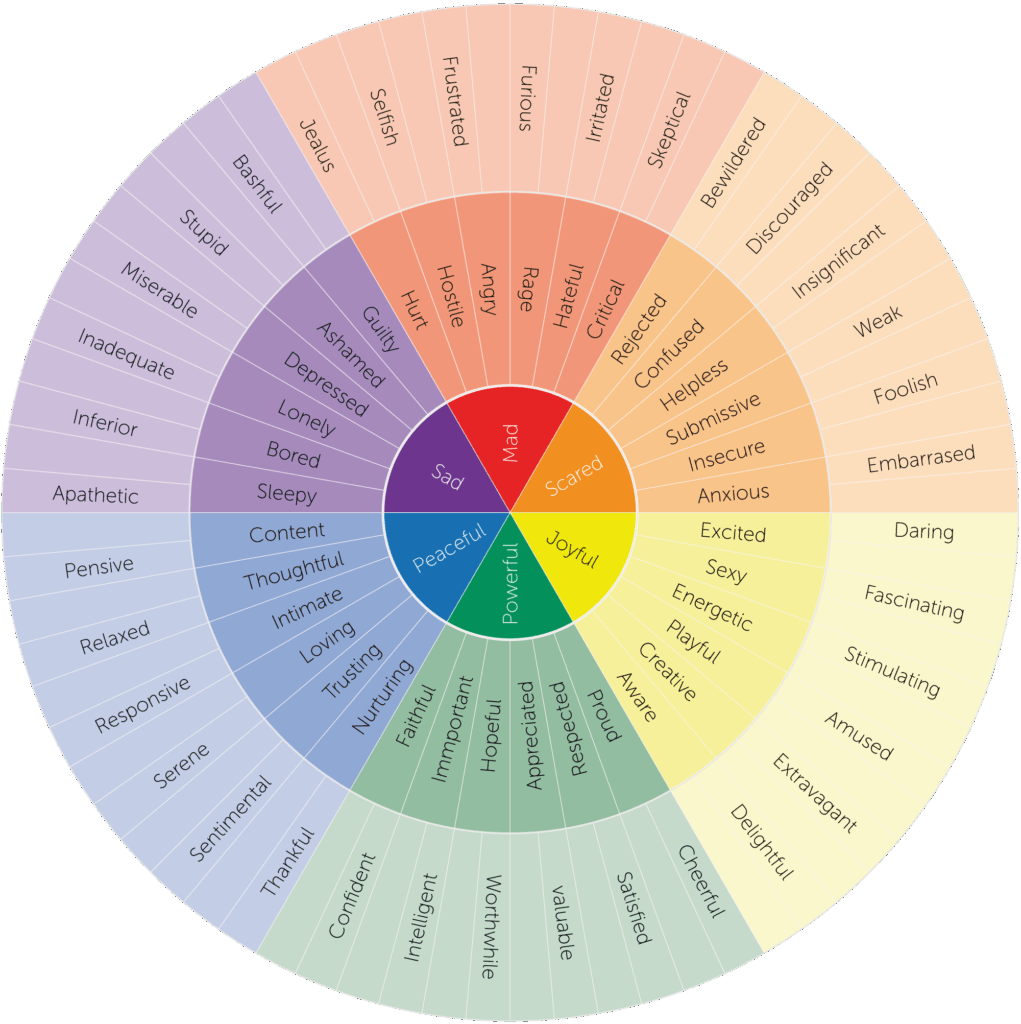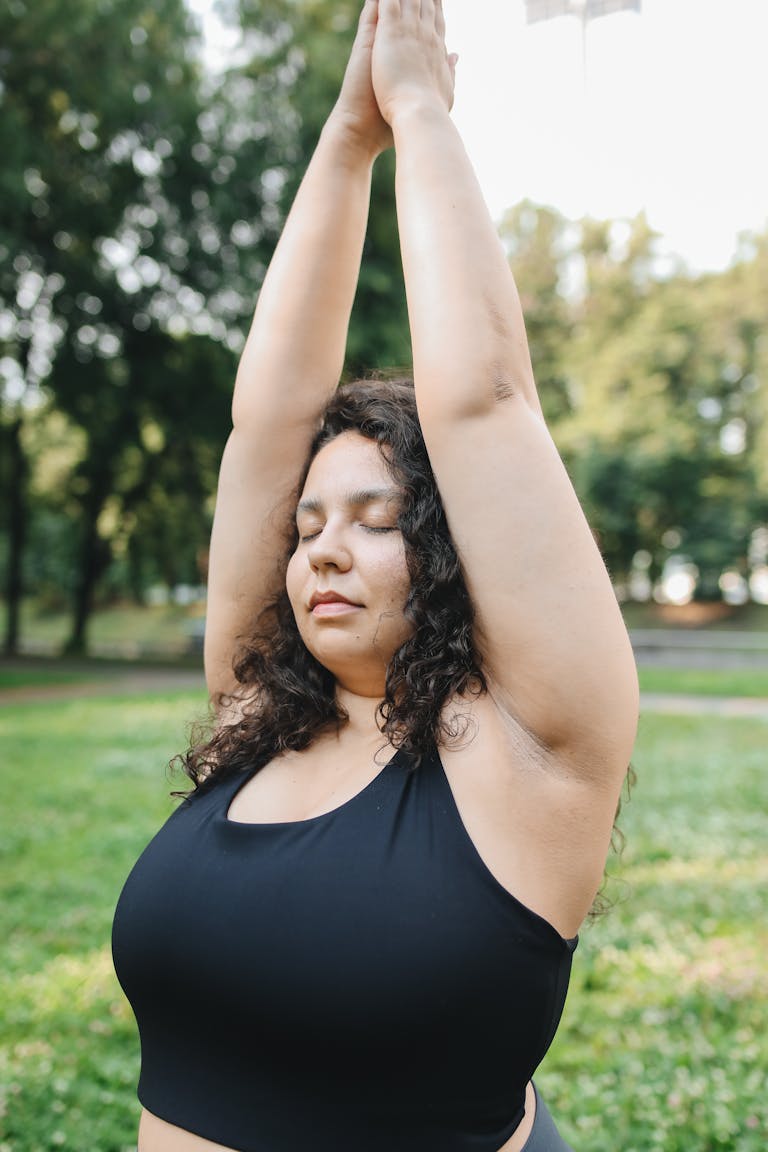The Tool That Taught Me How To Feel Emotions
As soon as children begin to develop vocabulary, they are able to express their feelings with words others can understand. Discovering how to feel emotions, they can learn the language of feelings and what they mean. However, sometimes, as children, we don’t have role models to teach us this emotional literacy. We aren’t taught how to feel emotions, or even give permission to express them fully.
Table of Contents
Instead, we might be taught to hide our sadness, tame our anger, or suppress our fear to make others comfortable. Over time, many of us lose the language and the courage to speak about what’s truly going on inside. This is exactly what happened to me, according to my therapist. I was emotionally neglected. That sounds really awful, but don’t worry, I wasn’t aware of it at the time. I didn’t feel neglected as a child, but my nervous system did! Now as an adult, I needed to learn how to feel emotions.

I subconsciously absorbed the vibes my caregivers were showing (or not). For instance, my feelings were likely dismissed as unimportant or invalidated. Basically there was a lack of emotional availability by my parents(s). That, coupled with not being taught how to feel emotions, left me wounded.
The wounds are not visible, but do cause long term effects that may impede relationships in adulthood.
For me, it caused low self-esteem, communications difficulty, and relationship attachment disorder. Other problems can include mental health issues, poor social skills, depression, delayed emotional development, and behavior problems.

While emotions are innate, like happy, sad, angry and so on, how to feel emotions and express them is learned. But the good news is that it can be unlearned. You can retrain your brain, with a few simple habits, to identify what you are feeling and explore the healthiest ways to express them. Then you will have emotional maturity to handle conflict and big feelings.
I didn’t realize how much this had impacted me until much later in life, when I found myself facing a major life transition. After the end of a long-term relationship, coupled with a son going to college, I was overwhelmed by emotions I couldn’t easily name, much less express.

Sadness, yes, but also anger, fear, resentment, loneliness, hope, and relief. They swirled together, often changing from moment to moment, leaving me feeling like a tangled mess. I needed to know how to feel emotions.
That’s when I discovered a simple but powerful tool: The Feelings Wheel.
You can get a FREE download of the wheel HERE. Plus, All The Feelz website even has an app for using the Feeling wheel.

The Feeling Wheel or Wheel of Emotions was first conceived by psychologist Robert Plutchik in 1980 as a visual aid to help identify emotions. You can find his version with a helpful tutorial HERE. The wheel is a valuable tool for improving emotional intelligence, self-awareness, and communication. A few years later, Dr. Gloria Willcox created a new version of the Wheel, pictured above, really helping people learn how to feel emotions.
I found this wheel that has more descriptive words as it fans out. This is one I use. Here is a FREE download.
Rediscovering My Emotional Vocabulary
At first glance, the Feelings Wheel seems almost too simple. A colorful graphic with emotion words arranged in a circle. But it’s so much more than that. It serves as a map for navigating the complex inner world of feelings, helping you go beyond the surface (“I’m sad”) and dig into the deeper, more nuanced layers of what you’re experiencing (“I feel powerless,” “I feel abandoned,” “I feel vulnerable”).
When I first started using the wheel, I was surprised by how often I misidentified what I was feeling. For example, I would say I was “angry,” but when I traced that anger inward, I often found deep sadness or fear sitting underneath. Other times, I would think I felt “fine,” only to realize I was actually feeling disconnected, numb, or resigned.

Naming these emotions was uncomfortable at first. It felt like peeling back protective layers I had built over decades. But I quickly learned that naming them is the first step to healing. This is when we learn how to feel emotions accurately. Then we can begin to care for them and for ourselves, in a much deeper way.
How To Feel Emotions
Believe me when I tell you that I didn’t learn how to feel emotions until I was 54 years old. The Feelings Wheel works because it invites mindfulness. Instead of reacting automatically to emotional discomfort (which often looks like shutting down, lashing out, or distracting ourselves), the wheel encourages us to slow down, notice, and investigate with curiosity.
How to feel emotions means paying attention to your physical being. How is your breathing? Are you trembling or relaxed? Are your palms sweaty or dry? Are you clenching your jaw, wringing your hands, or showing other signs of physical discomfort?

How about feeling the tension in your shoulders. Are you smiling, or scowling? Are you sweating, crying, laughing? Once you tune into your physical body (which is using the autonomic nervous system to send you messages), you can better identify the conscious emotions you are feeling.
Learn more about regulating your nervous system in this blog post: 8 Simple Self Care Habits To Regulate Your Nervous System
I have caught myself identifying an emotion on the wheel (the ones at the center), which are basic and stopping there. I have since learned to ask “why?” when I am stuck with the surface words. When I ask myself “why do you feel sad?”, it helps me to dive deeper into the emotion I am REALLY feeling.
It also provides language for the messy gray areas of life. Many times, we aren’t just sad or happy, we are grieving and hopeful at the same time. We are anxious but also excited. The Feelings Wheel gave me permission to experience multiple emotions at once without judging myself for it.

Most importantly, it reminded me that emotions are information, not identity. Feeling abandoned doesn’t mean I am unworthy. Feeling angry doesn’t mean I am a bad person. Emotions are simply messages from our inner world, asking us to pay attention. And how lucky are we that our brain can send these messages to us, so we can address them and heal.
How to Feel Emotions Using The Wheel
During my healing process, I started a very simple practice using the Feelings Wheel:

- Pause: Whenever I felt overwhelmed or “off,” I would stop what I was doing and take a few deep breaths.
- Check In: I would glance at the Feelings Wheel and ask myself, “Which words jump out at me right now?” I usually tried to name at least two emotions.
- Allow: I let myself sit with the feelings without trying to change or fix them immediately. Just acknowledging, “I feel isolated and scared,” without judgment was incredibly powerful.
- Reflect: Sometimes I would journal about what I noticed. Other times, just identifying the emotions helped enough to soften their intensity.
- Care: After acknowledging what I was feeling, I would ask myself, “What do I need right now?” Sometimes it was rest. Sometimes it was reaching out to a friend. Other times, it was simply being kind to myself. I also try to practice gratitude by journaling, weaving the feeling words into my gratitude statements.
For example:
“I am grateful for this awareness of loneliness that I am feeling. It allows me to remember that it may be the reason I am apathetic and have been isolating lately, and that’s okay”.
This practice became a cornerstone of my self-care during a very turbulent time in my life. If you want to learn more about Gratitude Practice, read this blogpost: Daily Gratitude Practice Transforms Your Life For The Better
Moving Through, Not Around
The biggest lesson I’ve learned from using the Feelings Wheel is this:
You can’t heal what you’re unwilling to feel.–Read that again!
I know I have had to re-read that statement many times. I am so guilty of not wanting to feel my emotions. But it is mainly because it left me feeling vulnerable and fearful of rejection, because I did not know how to feel emotions.
For years, I had unknowingly been trying to bypass my grief. Suppressing those feelings, or avoiding them. I stayed busy, I stayed strong, I stayed “fine”, I flat our ignored them!
But unprocessed emotions don’t disappear, they just wait for quieter moments to resurface. And if we keep pushing them down, they eventually blow, like a volcano.

By using the Feelings Wheel and allowing myself to fully experience my emotions, I stopped running. I began to process. I began to move through the hard feelings instead of circling endlessly around them.
I learned how to feel emotions with the help of my therapist. She introduced me to the Wheel.
And as painful as that process sometimes was, it also created space for clarity, resilience, and self-trust to grow.
In Summary: A Tool for Any Season
You don’t have to be going through a major life upheaval to use the Feelings Wheel. In fact, I wish I had known about it years ago. It’s kind of embarrassing that I didn’t know about it because it feels like something we may have been taught in school.
It’s just as helpful for navigating everyday stress, parenting challenges, or even the emotional rollercoaster of trying to create a new, healthier life for yourself.
Today, I use the wheel regularly. I am in the middle of processing big emotions around another life change, and this tool has been a trusted companion.
If you are walking through your own season of change, heartbreak, healing, or just need to know how to feel emotions, I encourage you to give this small but mighty tool a try. You don’t have to untangle everything at once. You don’t even have to make sense of it all right now.
Just start with one breath, one feeling, one small act of sitting with the feeling and owning it.
You are worth that kind of care.








